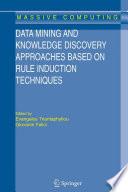
Tumors of the Brain and Spine
Tumors of the Brain and Spine focuses primarily on approaches to the treatment of benign, primary low-grade to high-grade, and metastatic tumors in the brain and spine, as practiced by surgeons and clinicians at the University of Texas M. D. Anderson Cancer Center. The book is written mainly for the primary care oncologist, general neurologist, and general neurosurgeon. Discussion of treatment coverage focuses on neurosurgery, chemotherapy, and radiation therapy, singly and in combination. Also included are chapters on symptom management, molecular genetics and neuropathology of intracranial tumors, leptomeningeal dissemination of systemic cancer, epidemiology of brain tumors, and innovative treatment strategies.
- ISBN 13 : 9780387292021
- ISBN 10 : 0387292020
- Judul : Tumors of the Brain and Spine
- Pengarang : Franco DeMonte, Mark R. Gilbert, Anita Mahajan, Ian Earle McCutcheon,
- Kategori : Medical
- Penerbit : Springer Science & Business Media
- Bahasa : en
- Tahun : 2007
- Halaman : 364
- Halaman : 364
- Google Book : https://play.google.com/store/books/details?id=GlRjsXvdRUgC&source=gbs_api
-
Ketersediaan :
... xanthoastrocytomas, and subependymal giant cell astrocytomas). Diffusely
infiltrating low-grade. Low-grade gliomas consist of the diffusely infiltrating low-
grade gliomas (astrocytomas, oligodendrogliomas, and mixed gliomas) and the
more circumscribed “astroglial variants” (pilocytic astrocytomas, gangliogliomas,
Figure 5–3. The use of intraoperative MRI, such as the. 5 LOW-GRADE GLIOMAS
: Chapter 5 Low-Grade Gliomas: Evidence-Based Treatment Options Frederick F
Lang.









